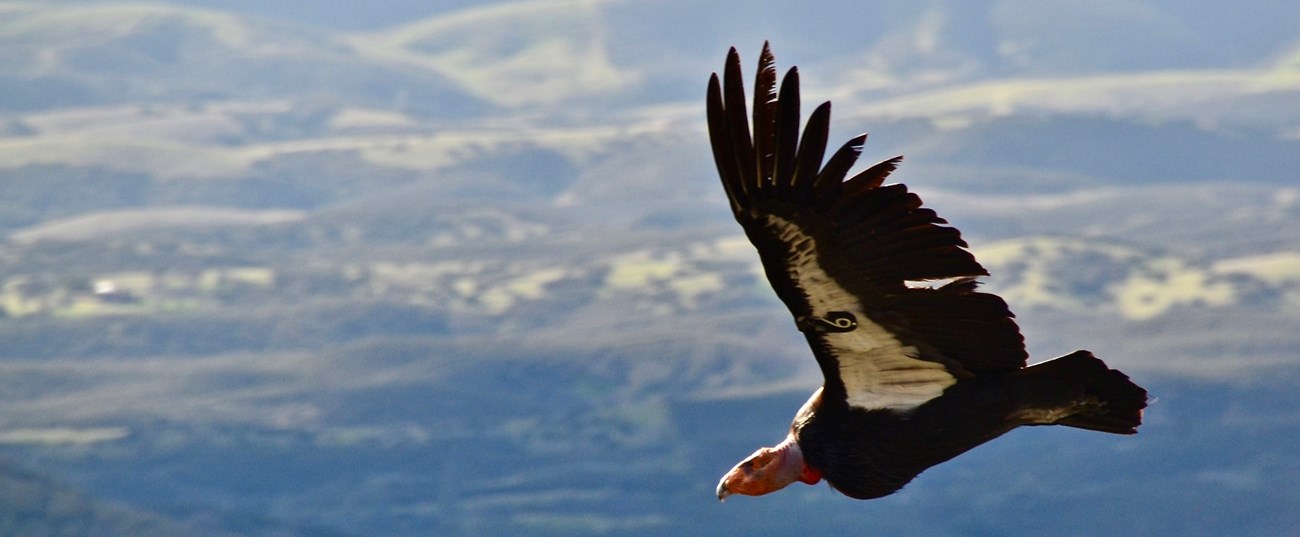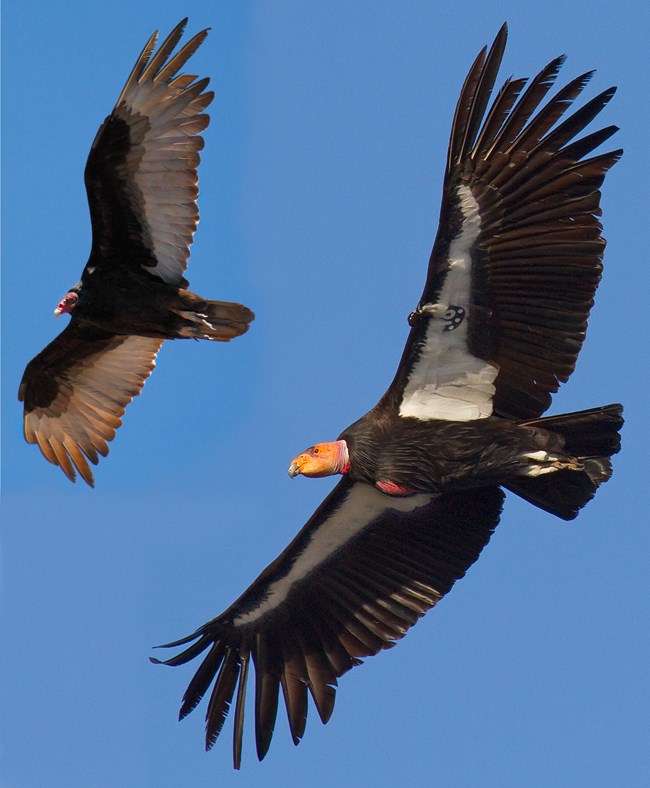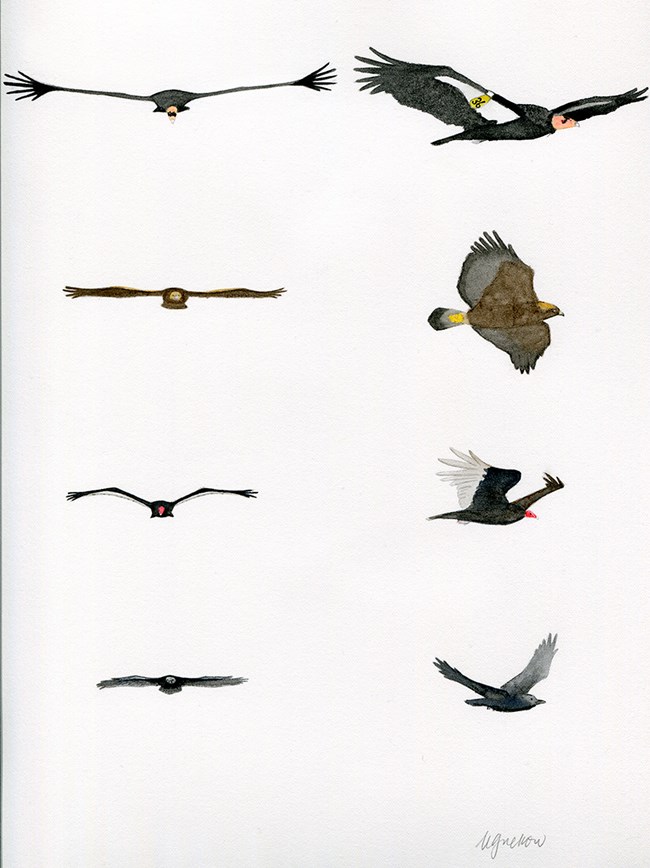
Rose Fielding Where is the best place to see a California condor at Pinnacles?Condors do not migrate and are observed in this area year round. They move frequently within their expanding territory, so they may not always be seen inside the park. If you are going to visit Pinnacles and you hope to see a condor, one of the most likely viewing areas is the High Peaks in the early morning or early evening. The High Peaks can be reached from either entrance to the park, but keep in mind that hiking to the High Peaks is strenuous. Please carry and drink plenty of water, wear layered clothing, and be prepared for temperature extremes. Another location where the condors are frequently spotted is the ridge just southeast of the campground. Condors are often observed soaring on the morning thermals along the ridge and coming in to roost on their favorite trees in the evenings. Two spotting scopes have been placed in the Campground (on the Bench Trail near Pinnacles Visitor Center) that may help you get a closer look at these magnificent birds. Remember that our condors are free-flying, which means there is no guarantee you will see one on a given day at a given time. Please remember to stay out of areas that are marked as closed to the public to protect the condors other wildlife. 
NPS/Gavin Emmons How can I tell if the bird I saw is a condor?Condors are striking birds that can be viewed as ugly or majestic, depending on who you ask! Like many other vultures, condors are scavengers that eat only dead animals. They have bald heads, sharp hooked beaks and muscular necks, and large flat feet (instead of the seizing talons that characterize raptors). All of these features help condors feed efficiently on carcasses: their bald heads keep them cleaner during their often-gruesome feeding events, their strong necks and hooked beaks are used for pulling and tearing off chunks of meat, and their flat feet keep them firmly planted on the ground as they tug on their food.

Artist: NPS/Megan Gnekow If you’re viewing the birds from below, you’ll notice the adult condor’s striking white triangle on the leading edge of the underside of their wings. (This patch is more of a mottled gray color in juvenile condors.) Turkey vultures, on the other hand, have silver-gray colored feathers on the trailing edge of the underside of their wings. You can also see that condors have large pink and orange heads, while turkey vultures have very small red heads. Turkey vultures hold their wings in a slight "V" pattern, and will rock side to side in the wind. Turkey vulture flight is often described as wobbly or unstable when compared to that of a condor. If you're looking at a bird that is perching, look for a numbered wing tag. All California condors have at least one tag along the leading edge of their wing, and many have two. |
An official website of the United States government
Here's how you know
Official websites use .gov
A
.gov website belongs to an official government
organization in the United States.
Secure .gov websites use HTTPS
A
lock (
) or https:// means you've safely connected to
the .gov website. Share sensitive information only on official,
secure websites.
